In last year’s member’s report on Perth property, released in July, I warned that risks were building fast and that the market faced a repeat of the mid-1970s experience, whereby dwelling values retreated by 30% in real terms over an eight-year period:
Risks continue to build for the Western Australian economy, with both commodity prices and mining investment on the decline, which is likely to lead to rising unemployment and falling income growth. The Western Australian Government also faces the prospect of a deteriorating budgetary position, as lower iron ore prices reduce mining royalties, which could potentially be met with cuts to public services and jobs…
Following the end of the mid-1970s mining boom, Perth house prices declined by nearly 30% in inflation-adjusted terms over an eight year period. If history is any guide, similar falls could be in the offing over coming years as Western Australia’s once-in-a-century mining boom unwinds.
Today I want to share with you why my prediction last year was not bearish enough and why I now believe that Western Australia could be facing an economic depression.
The dire situation is best summed up by the below two charts.
First, Western Australian mining capex hasn’t even begun to retreat from record high levels:
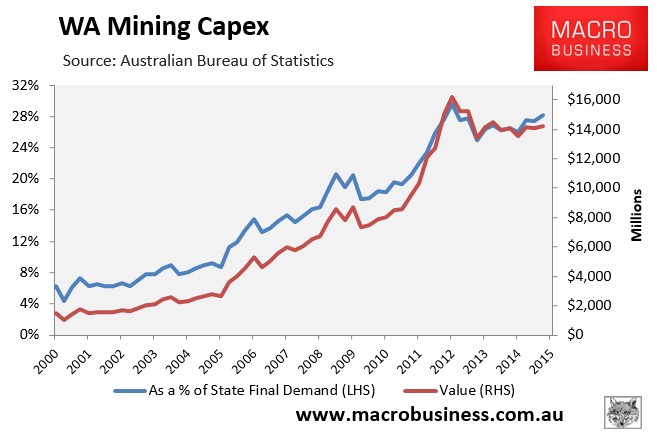
As it does retrace over the next two years, it will cost tens-of- thousands of jobs.
To illustrate, the Roy Hill iron ore project will see 8,000 construction workers turn into 2,000 miners, and one wonders how long those numbers will hold up with the margin squeeze that’s coming. You can double the attrition when the iron ore juniors go under.
Then there’s the giant LNG projects, Gorgon and Wheatstone. At Gorgon, 9,000 construction workers will turn into 400 gaseous technicians, whereas at Wheatstone, 6,500 workers will shrink to around 400 (if not less).
Add in multipliers, and Western Australia could easily see 50,000 jobs lost as mining capex returns to pre-boom levels (or below).
Then there is the Western Australian housing market, which is undergoing an almighty construction boom just as population growth crashes through the floor:
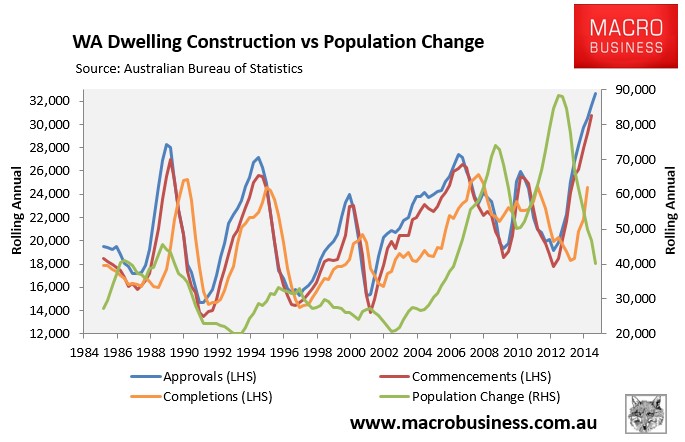
Perth house prices are already falling:
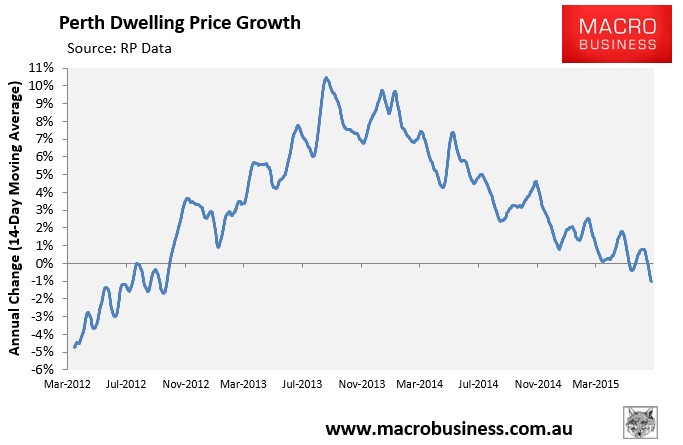
As are asking rents:
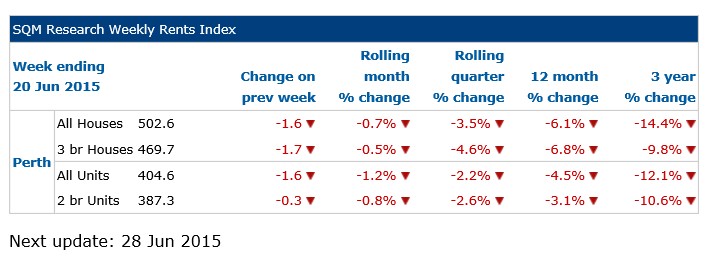
Whereas rental vacancies are skyrocketing:
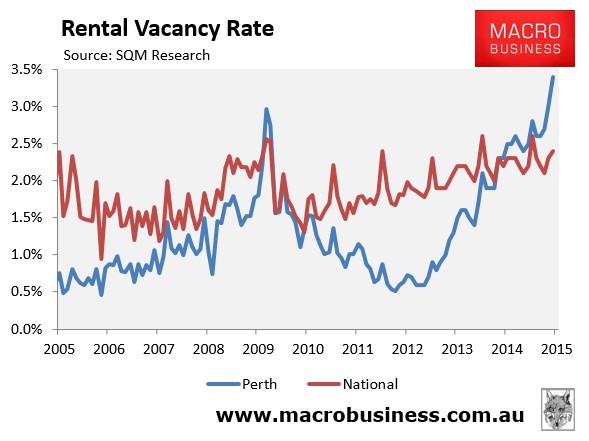
All of which points to a sharp slowdown in dwelling construction and the loss of many more construction jobs over the next two years.
As shown in the next chart, Western Australian construction employment has doubled from its pre-boom level to 158,000 as at May 2015:
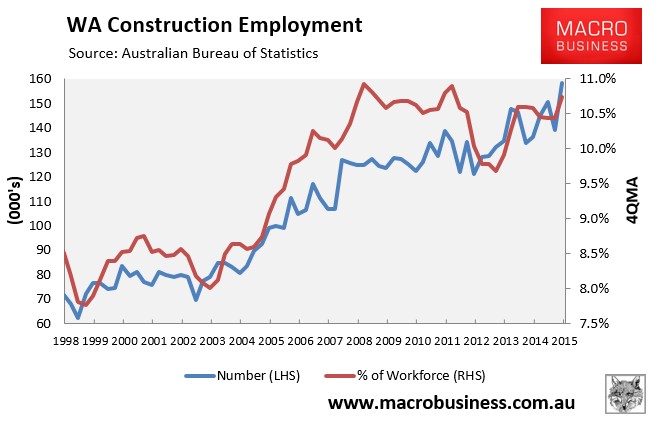
With both mining capex and housing construction facing sharp downturns over the next two years, the Western Australian construction industry could shed up to 80,000 jobs, with cascading impacts on other sectors.
On an employment base of only 1.4 million people currently, this suggests a significant increase of unemployment – possibly to 10% and beyond.
The Western Australian economy is already incredibly weak. While rising export volumes are supporting gross state product, state final demand – which is a better measure of domestic activity since it measures the sum of “government final consumption expenditure, household final consumption expenditure, private gross fixed capital formation and the gross fixed capital formation of public corporations and general government” – has already fallen for 10 consecutive quarters:
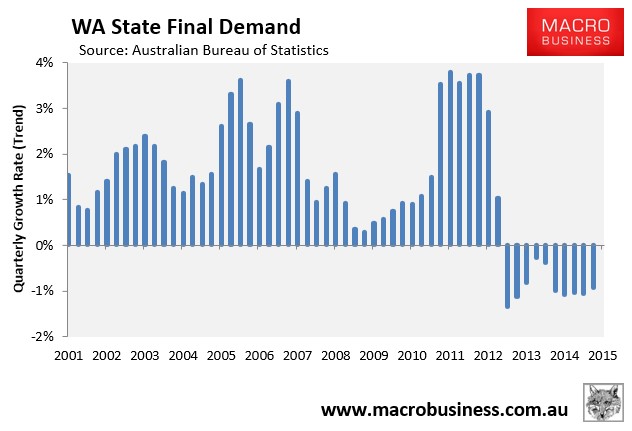
The situation is obviously set to go from bad to catastrophic over the next two years, given the massive construction downturn facing the state.
If you are one of the 11.4% of Western Australian taxpayers (numbering 165,000 people) holding a negatively geared property, and losing on average $10,555 per annum, then you should sell-up while you still can, and before a horde of negatively geared mining-exposed workers hit the panic button:
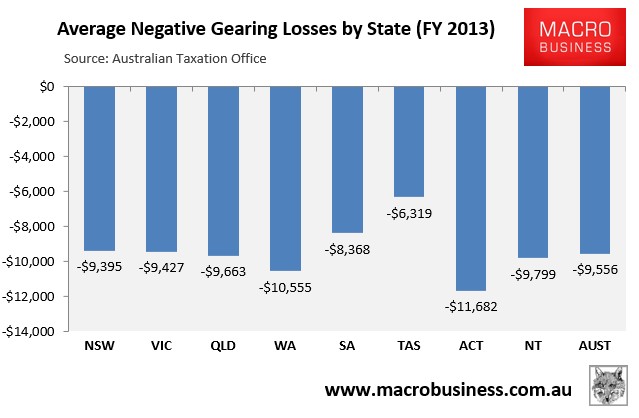
When housing cracks lower the unemployment feedback loop will intensify.
There is no contemporary Australian experience to match the developing economic situation in WA. It has been in effective recession for two years already (excepting exports which do little for local activity). That domestic recession is set to deepen meaningfully in the next year and, with next to zero prospect of counter-cyclical spending coming from a broken state Budget, a depression cannot be ruled out in the medium term.

